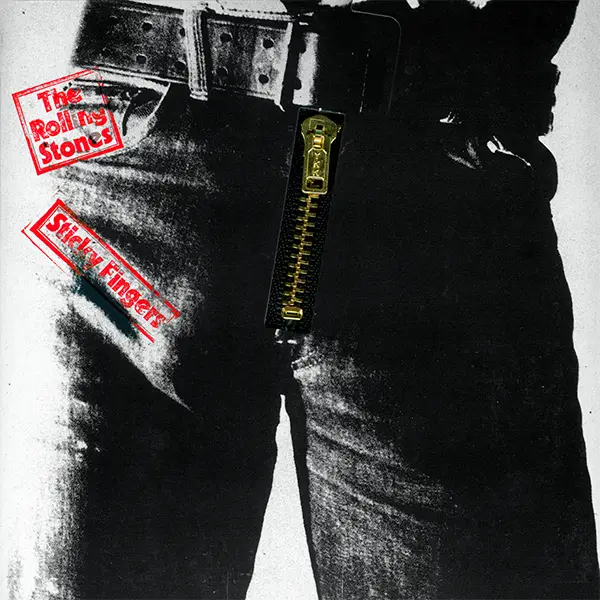#59 Sticky Fingers by The Rolling Stones
The 100 Greatest Albums of All Time

- 2025 Album Rank
- 59
- 2011 Album Rank
- 41
- Total Points
- 1006
- Year Released
- 1971
- Billboard 200 Chart Peak
- 1
- Weeks at #1
- 4
- RIAA Sales Certification
- 3,000,000 (Multi Platinum)
- Buy Album
- Apple Music Amazon
Sticky Fingers Album Details
Released in April 1971, Sticky Fingers marked a defining moment for The Rolling Stones. It was their first album on their own label (Rolling Stones Records), the first with their iconic tongue-and-lips logo, and the first full album without founding member Brian Jones. It also introduced guitarist Mick Taylor as a full-time contributor, bringing a bluesy sophistication to the band's evolving sound. Darker and more decadent than their 1960s output, Sticky Fingers cemented the Stones' image as rock's most dangerous band.
Musically, the album blends country ballads, hard rock, and soul-inflected blues, showcasing both swagger and vulnerability. Tracks like Brown Sugar, Wild Horses, and Can't You Hear Me Knocking became instant classics. The album's mix of sleaze, melancholy, and virtuosity reflects a band in creative overdrive. With its provocative Andy Warhol designed cover (featuring a working zipper), Sticky Fingers became as iconic visually as it was musically.
Other Rolling Stones' albums on the list: Exile on Main St. and Let It Bleed
Interesting Facts About Sticky Fingers
- The cover design by Andy Warhol featured a close-up of a male crotch in tight jeans with a functioning zipper. The original vinyl pressing revealed underwear beneath when unzipped, though the model was not Mick Jagger.
- Brown Sugar was recorded at Muscle Shoals Sound Studio in Alabama in 1969, during a brief tour of the American South. Its controversial lyrics have sparked debate for decades.
- Can't You Hear Me Knocking ends with a nearly four-minute instrumental jam featuring saxophonist Bobby Keys and a Santana style guitar solo by Mick Taylor. The jam was unplanned and kept on tape because the band liked it so much.
- Sister Morphine was co-written with Marianne Faithfull, who released an earlier version in 1969. Her original vocals were replaced by Jagger's on the Stones' release, leading to a dispute over songwriting credits.
- Wild Horses is often interpreted as a breakup song, but Keith Richards has said it was partly inspired by his son Marlon, whom he hated leaving behind during tours.
- The album includes Dead Flowers, a country rock song showcasing the Stones' embrace of Americana and their friendship with Gram Parsons.
- The Stones formed Rolling Stones Records to gain artistic and financial control after years with Decca/London Records. The famous tongue-and-lips logo was designed by John Pasche, not Warhol.
- Moonlight Mile, the closing track, began as a solo acoustic demo by Mick Jagger and features a lush string arrangement by Paul Buckmaster. Keith Richards does not appear on the recording.
- Sessions for Sticky Fingers took place over nearly two years in studios in Alabama, London, and Olympic Studios. The extended timeline contributed to the album's stylistic diversity.
- In 2015, the album was reissued with an expanded deluxe edition that included alternate takes, live cuts, and unreleased versions, giving deeper insight into its complex production history.
- The album was inducted into the Grammy Hall of Fame in 1999 for its cultural and historical significance.
Sticky Fingers Tracklist
- Brown Sugar - Reached #1 on Billboard's Hot 100 chart
- Sway
- Wild Horses - Reached #28 on Billboard's Hot 100 chart
- Can't You Hear Me Knocking
- You Gotta Move
- Bitch
- I Got the Blues
- Sister Morphine
- Dead Flowers
- Mooonlight Mile
